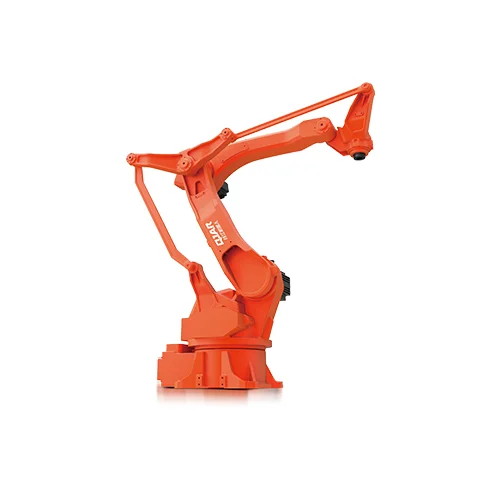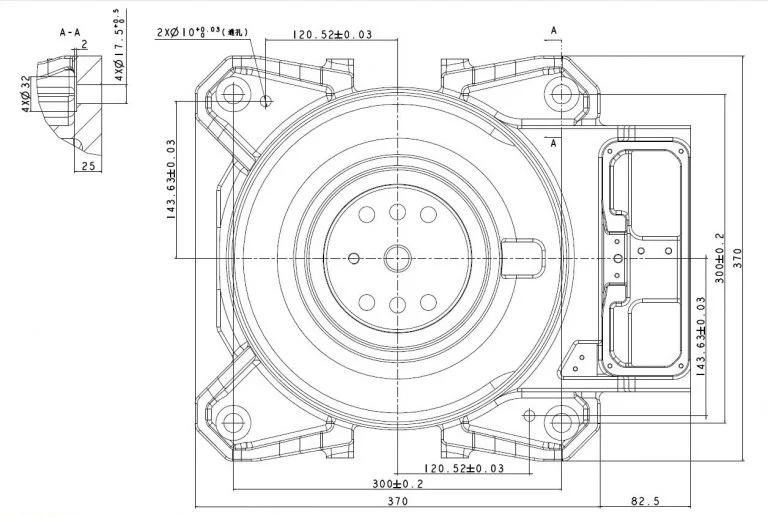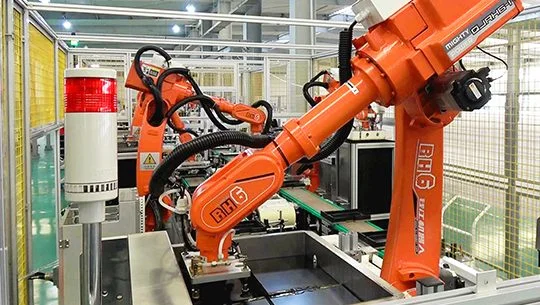Introduction
The manufacturing landscape has transformed significantly since assembly lines were introduced, revolutionising the process of producing items. The fundamental aspect of this development is the incorporation of robotics, specifically the assembly robot, which is an indispensable part of modern production procedures. This article aims to discuss robotic assembly lines in detail and highlights the capabilities of state-of-the-art equipment such the “15kg Payload 1510mm Reaching Distance Robotic Arm QJRB15-1.” This robotic arm serves as a prime illustration of the technical breakthroughs in the field of robotics in manufacturing, thanks to its precision, efficiency, and versatility.
What are Assembly Lines?
Since the beginning of production, assembly lines have served as its foundation. In the past, these lines assembled products using a combination of machine and human labour. But the dynamics have shifted dramatically since the introduction of robotics in manufacturing. Assembly robots, like the QJRB15-1, are now considered essential since they can complete jobs faster and with greater accuracy than humans. For example, QJRB15-1 robots perform assembly, glueing, and handling duties in a lithium battery assembly line, greatly decreasing labour costs and increasing output.

Historic Developments in Assembly Lines
A turning point in the history of manufacturing was reached in the 1960s with the introduction of Unimate, the first industrial robot, although Henry Ford had innovated the assembly line paradigm earlier in the decade. After thereafter, the application of robotics in manufacturing has changed, particularly in the 1970s and 1980s when microprocessor-controlled and collaborative robots gained popularity. High-tech assembly robots, which are now widely employed in industries across the globe, were made possible by these advancements.
Components of a Robotic Assembly Line
Each component that makes up a contemporary robotic assembly line is essential to its functioning. These include material-transporting conveyors, task-executing industrial robots like the QJRB15-1, material-handling end effectors, precision sensors, operation management controllers, continuous power supplies, and safety equipment to guarantee a risk-free environment. The advanced nature of robotics in manufacturing is demonstrated by the harmonious operation of each component, which results in a smooth manufacturing process.
Advantages of Robotic Assembly Lines
The incorporation of assembly robots in manufacturing lines offers numerous benefits. Firstly, they significantly increase productivity and efficiency, thanks to their high-speed and stable operation. For example, the QJRB15-1 operates at low power output yet delivers high-speed performance, ideal for industries like furniture, food, beverage, and 3C. Secondly, the quality and repeatability of products are enhanced, with robots like QJRB15-1 boasting a repeat positioning accuracy of ±0.05mm. Additionally, these robots reduce labor costs and enhance workplace safety. Their flexibility and data collection capabilities also contribute to a faster time-to-market for products.

Challenges with Robotic Assembly Lines
Despite their advantages, integrating assembly robots into manufacturing comes with challenges. The high initial investment and ongoing maintenance costs can be significant. Integrating these advanced systems, like the QJRB15-1 with existing manufacturing setups, often presents challenges. There’s also the need for workforce training and addressing safety concerns related to working alongside robots. Furthermore, the dependence on a stable power supply and limitations in flexibility for certain tasks, coupled with the complexity of robot programming, can be daunting.
Applications in Different Industries
Automated assembly robots such as the QJRB15-1 are used in numerous sectors. They are essential in the automobile industry for welding, painting, and assembling car parts. Their proficiency with soldering, handling small parts, and conducting inspections is advantageous to the electronics sector. They are essential to the food and beverage industry’s sorting, packing, and inspection processes. The pharmaceutical business uses them for labelling, packing, and dispensing. Not to mention, the aerospace sector uses these robots to drill, rivet, and assemble aircraft parts.
Future of Assembly Lines
With the advent and integration of collaborative robots (cobots) and the growing significance of artificial intelligence (AI) and machine learning in augmenting flexibility and reaction, the future of assembly line robotics in manufacturing appears bright. Web of Things (IoT) connectivity will fundamentally change how these systems communicate and collaborate. Safety, energy efficiency, and customisation are probably going to be the primary areas of focus, with performance and sustainability advantages anticipated.

Conclusion: Key Takeaways
In conclusion, QJRB15-1 assembly robots are becoming more and more important in today’s production. Tech development is demonstrated by the evolution of assembly lines from their early days to the present, when robotics in manufacturing is the norm. The advantages of higher quality, production, and efficiency outweigh the difficulties. The extensive use of assembly robots in a wide range of industries and their bright future highlight their importance in reshaping the manufacturing landscape. As technology develops, we may anticipate even more significant advancements in AI and robotics, which will significantly improve the potential and usefulness of assembly robots in production. Visit EVS Int for more information about robotics in manufacturing.
